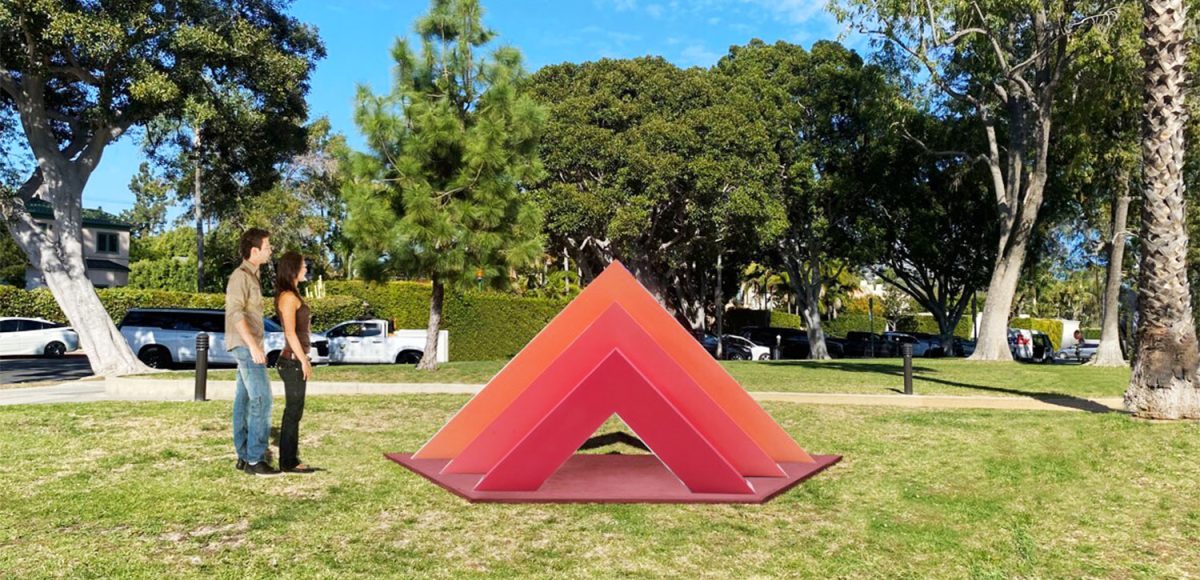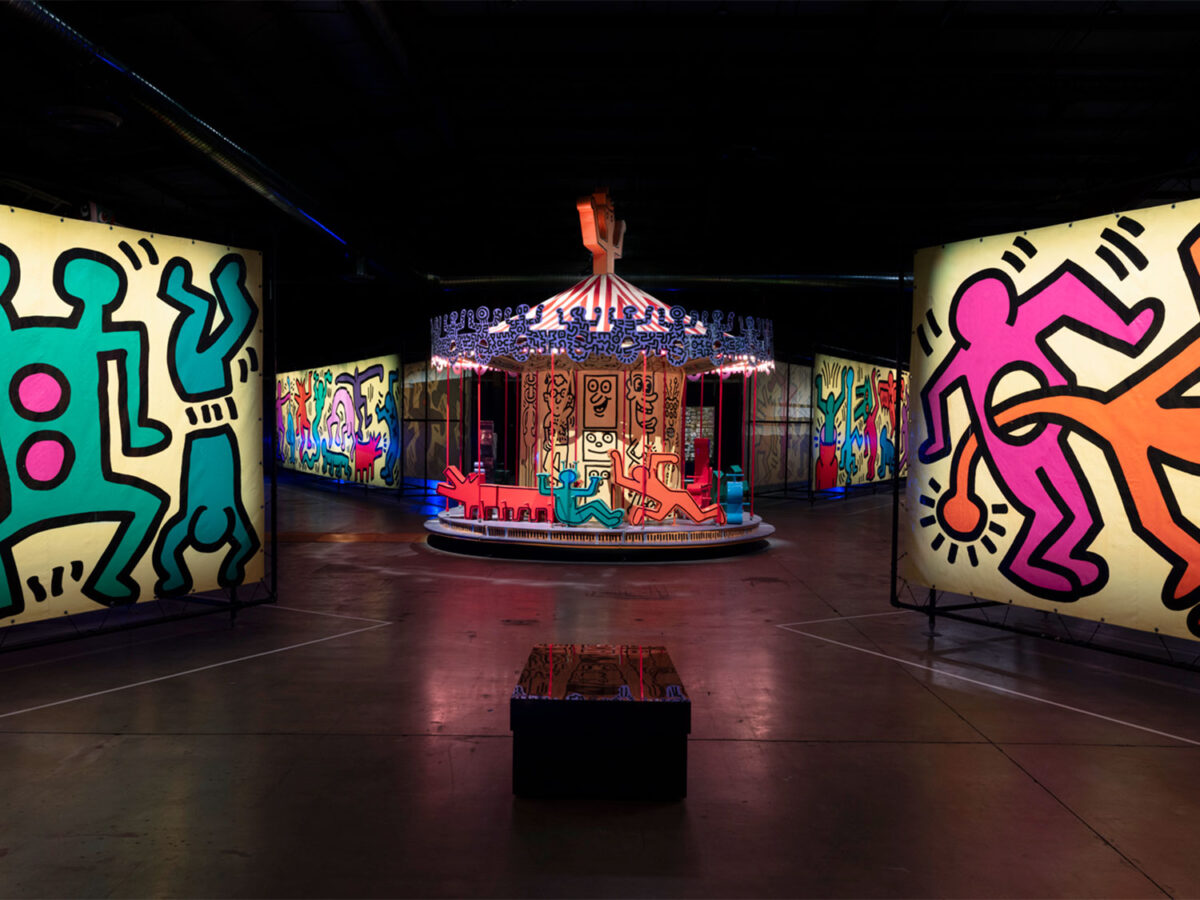A proposal to spend more than half a million dollars to acquire and install an abstract sculpture by renowned artist Judy Chicago spurred an interesting debate amongst the Beverly Hills City Council over the value of art.
While the majority of councilmembers stood behind the proposal put forward by the Arts and Culture Commission during the May 16 Study Session, Councilmember John Mirisch questioned whether the piece was worthy of the price tag.
Ultimately, the Council agreed to move forward with the proposal under the condition that staff return with more information on the value and historical appreciation of other works by Chicago, per a request by Mirisch.
The sculpture in question is a 5-foot-4-inch-high, 10-foot-6-inch-wide piece called “Trinity” that consists of three differently-sized stainless-steel triangles. Chicago and commissioners propose installing it on the City Hall lawn at the corner of Crescent Drive and S. Santa Monica Boulevard.
The sculpture will cost $400,000 to purchase, with an additional $150,000 budgeted for the fabrication of a concrete base, transportation of the sculpture, inspections, permits, installation, and lighting. The piece was selected in part due to a desire by the Arts and Culture Commission to highlight more female artists within the city’s public art collection.
Councilmember Lili Bosse said she was a big fan of the piece, but also acknowledged that its simplicity might not appeal to everyone.
However, she noted that some of the most famous and avant-garde artists received similar criticisms of simplicity, pointing to Jackson Pollak with his splattered dots and Andy Warhol with his Campbell Soup cans as examples.
“I also want to say in general there is no right or wrong to art,” said Bosse. “Art is generally a conversation. People can look at a piece of art and love it or hate it and that’s part of the wonderful element of art.”
This argument didn’t do enough to sway Mirisch’s skepticism over the value of the work.
“It’s true that some people love a piece or don’t love a piece, but if we’re going to spend over half a million, I really would prefer that all of us do love it rather than just spark a conversation,” he said.
“I’ve also spoken with other people who are reputable art collectors… who did not necessarily think that this would be the best thing that we could get for the money,” added Mirisch, as he voiced a desire to look into the comparative prices of works from other female artists.
Ultimately, he found himself in the minority as commissioners and councilmembers lauded the proposed acquisition and prominence of Chicago.
“Judy Chicago has made groundbreaking contributions to the art world paving the way for greater representation and recognition of female artists over the past six decades,” said Art and Culture Commissioner Deborah Frank. “The acquisition of ‘Trinity’ as an addition to the world-renowned Beverly Hills fine art collection sends a powerful message about the importance of female voices and perspectives in the art world.”
Chicago is indeed an accomplished artist with a long and prosperous career. Her work is featured in the British Museum, Tate Modern in London, Whitney Museum in New York, LACMA, MOCA, the Hammer Museum, San Francisco Museum of Modern Art and the Art Institute of Chicago.
Trinity is part of three similar sculptures in an exclusive collection by Chicago. The first one is owned by a private collector while the second is currently on display at the Whitney.
Vice Mayor Lester Friedman said he felt it was important to recognize the expertise of the commissioners who were appointed due to their significant knowledge and experience in the art world and selected this piece after months of research and deliberation.
“I’m one that really believes wholeheartedly in the commission system that we have within the city,” he said. “I don’t have any experience in estimating the value of art and I put a lot of stock in their [commissioners’] opinions.
In Tuesday’s study session councilmembers also discussed plans for this winter’s holiday lights and decorations as well as proposed new rules around outdoor dining.
Council was generally supportive of the holiday decor plan which consists of a vast array of lights, projections, signs and decorations across the city, while some members voiced a desire to examine ways to make the decor more cost effective in future years.
Similarly, councilmembers were largely on board with the proposed changes to outdoor dining rules, which were spurred by the uptick in restaurants’ use of outdoor space during the pandemic. The rules set new design regulations and fee structures for patio dining and ‘parklets,’ which are dining spaces that overflow into parking spaces.
Staff will return before the full City Council in the coming weeks with a drafted ordinance on these new outdoor dining rules.







